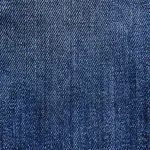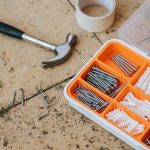Are you tired of staring at that unsightly rip in your couch seam? Don’t worry, you don’t have to be an expert seamstress to fix it. In fact, with a little bit of patience and the right materials, you can easily repair the tear without even touching a needle and thread.
In this article, we will guide you through a step-by-step process on how to fix a ripped couch seam without sewing. From assessing the extent of the damage to applying the adhesive, we will cover everything you need to know to make your couch look as good as new.
So don’t throw away that old couch just yet, follow our simple instructions and you’ll have it looking like it never had a tear in the first place.
Table of Contents
Assess the Extent of the Damage
Now, you’re probably wondering how bad the damage is and if it’s even fixable without sewing. The first step to fixing a ripped couch seam without sewing is to assess the extent of the damage.
Check how long the tear is and if any stuffing is coming out. If the rip is longer than 6 inches or if the stuffing is coming out, it may be best to seek professional help or replace the couch altogether.
If the damage is minor, you can fix it easily at home without sewing. You can use fabric glue or adhesive tape to seal the tear. Fabric glue works best for tears that are small or in inconspicuous areas.
Simply apply the glue to the edges of the rip and press them together. Allow the glue to dry completely before sitting on the couch. If you choose to use adhesive tape, make sure it is strong enough to hold the couch together. Duct tape or clear packing tape are good options.
Cut a piece of tape that is slightly longer than the tear and place it over the rip. Smooth out any wrinkles or bubbles in the tape and press it firmly onto the fabric.
With these simple steps, you can fix a ripped couch seam without sewing and prolong the life of your furniture.
Purchase the Right Materials
You’re going to need a few things to fix that ripped couch seam without sewing. Fabric glue or fusible bonding tape are great options for repairing the fabric.
You’ll also want to have a hot glue gun on hand to help secure any loose threads or edges. With these materials, you’ll be well on your way to repairing your couch and making it look as good as new.
Fabric Glue or Fusible Bonding Tape
First, grab some fabric glue or fusible bonding tape from your local craft store. These materials are great options for fixing a ripped couch seam without sewing. Here are three reasons why:
-
They’re easy to use. Fabric glue and fusible bonding tape require no special skills or equipment to apply. Simply follow the instructions on the package, and you’ll have your couch fixed in no time.
-
They’re affordable. Compared to hiring a professional or purchasing a new couch, fabric glue and fusible bonding tape are very budget-friendly options. You can save a lot of money by fixing the rip yourself.
-
They’re versatile. Fabric glue and fusible bonding tape can be used on a variety of fabrics, not just couches. This means you can use them for other DIY projects around the house as well.
Hot Glue Gun
If you’re looking for an alternative to traditional sewing methods, using a hot glue gun can be a great option for repairing torn fabric on your couch. Hot glue guns are easy to use and can provide a strong bond that lasts for a long time.
To use a hot glue gun, start by cleaning the torn area of your couch thoroughly. Then, apply a small amount of hot glue to one side of the torn seam and press the two sides of the fabric together firmly. Hold the fabric in place until the glue dries completely.
Repeat this process for any other torn areas on your couch. With a little patience and practice, you can use a hot glue gun to fix your couch and avoid the expense of professional repairs or replacement.
Clean the Area Around the Ripped Seam
Before starting the repair, it’s important to wipe down and clean the area around the ripped seam to ensure a smooth and secure fix. Use a damp cloth to wipe away any dirt or debris from the area. This will help the glue adhere better and prevent any bumps or lumps from forming.
If there are any loose threads or frayed edges, trim them carefully with a pair of scissors. Make sure not to cut too close to the seam or you risk making the rip worse.
Once you’ve cleaned and trimmed the area, take a moment to inspect the rip and determine the best way to approach the repair. Remember, the cleaner and smoother the area around the ripped seam, the better the repair will look and hold up over time.
So take your time and be thorough with the cleaning process before moving on to the next step. With a little patience and attention to detail, you can fix your ripped couch seam without sewing and have it looking like new again in no time.
Apply the Adhesive
Now it’s time to apply the adhesive and bring your couch back to life!
Make sure the area around the ripped seam is clean and dry.
Apply a small amount of adhesive to a toothpick or cotton swab and dab it onto the torn edges of the fabric. Be careful not to use too much adhesive as it can seep through the fabric and create a mess.
Press the torn edges of the fabric together firmly and hold them in place for a few minutes to allow the adhesive to set. You can use a clamp or heavy object to apply pressure if needed.
Once the adhesive has fully dried, gently tug on the fabric to make sure it is secure. If the fabric starts to come apart, apply more adhesive and repeat the process.
Remember to let the adhesive fully cure before using the couch. This can take several hours or even overnight depending on the type of adhesive used.
Once the adhesive is fully cured, your couch should be as good as new!
Press the Seam Together and Let it Dry
After applying a small amount of adhesive to the torn edges, press them firmly together and hold for a few minutes to ensure a strong bond before letting it fully cure overnight. Make sure you align the edges perfectly before pressing them together. You can use a ruler or a straight edge to guide you if needed. Applying pressure will help the adhesive penetrate the fibers of the fabric and create a strong bond.
Once you’ve pressed the seam together, it’s important to let it dry completely before using the couch again. Avoid sitting on the affected area or putting anything heavy on it until the adhesive has fully cured. This can take anywhere from a few hours to overnight depending on the type of adhesive you used and the temperature and humidity of the room. Be patient and wait for the adhesive to dry completely before using the couch again.
If the torn seam is in a highly visible area, you may want to consider covering it with a patch or decorative trim. This can help hide the repair and give the couch a new look. Just make sure the patch or trim is securely attached and won’t come off easily.
With these simple steps, you can fix a ripped couch seam without sewing and make your couch look as good as new.
Trim any Excess Adhesive
You’ll want to take a pair of scissors and carefully trim any excess adhesive from the repaired area, so it looks clean and neat. This step is crucial because it helps to ensure that the repaired seam blends in with the rest of the couch. Use a pair of sharp scissors to avoid accidentally cutting the fabric while you trim. Take your time and make small cuts to avoid removing more adhesive than necessary.
Once you’ve trimmed the excess adhesive, take a step back and assess the repaired area. If there are any rough edges or uneven spots, use a piece of sandpaper to smooth them out. Gently sand the area until it’s even with the surrounding fabric. This will help to create a seamless repair and prevent the repaired seam from catching on anything.
After you’ve trimmed the excess adhesive and smoothed out any rough spots, take a clean, damp cloth and gently wipe down the repaired area. This will remove any remaining adhesive residue and help to blend the repaired seam even more seamlessly into the rest of the couch.
Once you’ve completed this step, your couch should look as good as new, and the repaired seam should be strong enough to withstand regular use.
Test the Repair and Repeat if Necessary
To ensure the repair is successful, give the area a gentle tug to test its strength and durability. Imagine yourself sinking into the couch and feeling confident in its sturdiness. If the repair is not strong enough, repeat the process by adding more adhesive and allowing it to dry completely before testing again. Once you have achieved the desired strength, trim any excess adhesive.
To further test the repair, sit on the couch and move around to see if the seam holds up. You can also apply pressure with your hands to see if the adhesive holds and if the seam stays intact. If there are any signs of weakness, repeat the process until the repair is strong enough to withstand regular use.
Remember to let the adhesive dry completely before testing the repair. This may take several hours or even overnight.
Additionally, avoid sitting or putting any weight on the repaired area until the adhesive has completely dried. With a little patience and attention to detail, you can fix a ripped couch seam without sewing and enjoy a sturdy and comfortable couch once again.
- How Does Ring Spun Cotton Affect Garment Fit and Shape Retention? - August 13, 2024
- What Are the Challenges in Producing Ring Spun Cotton? - August 13, 2024
- Is Ring Spun Cotton Suitable for Plus-Size Clothing? - August 13, 2024





